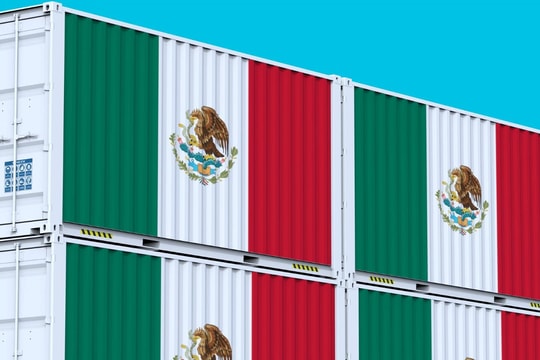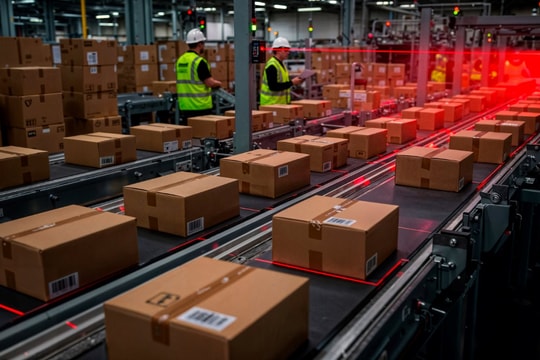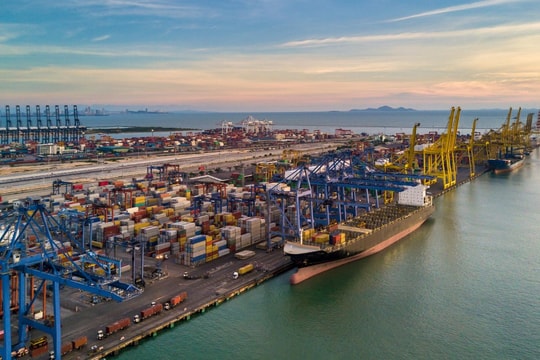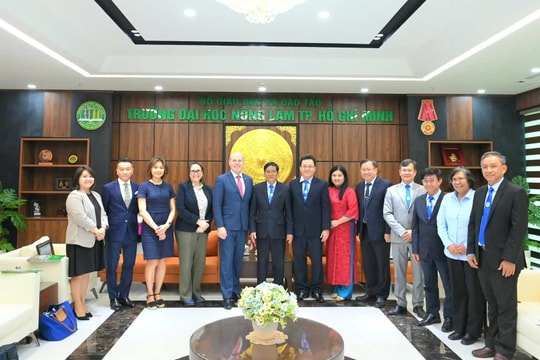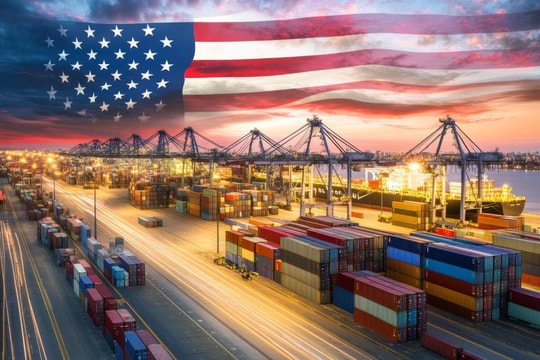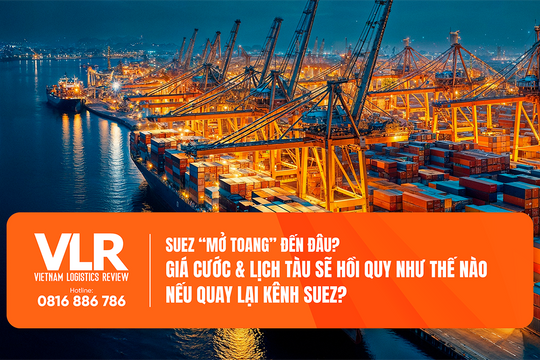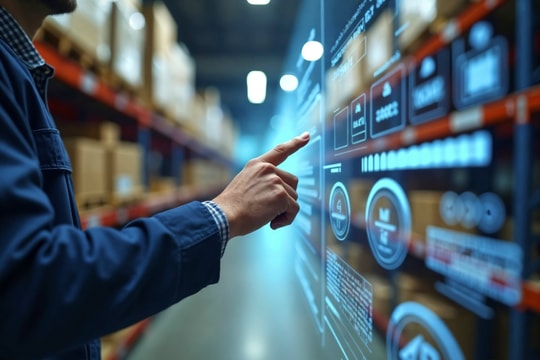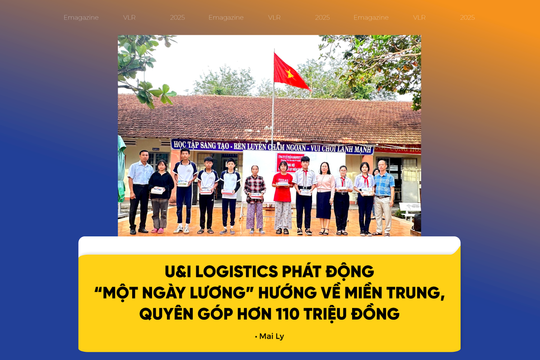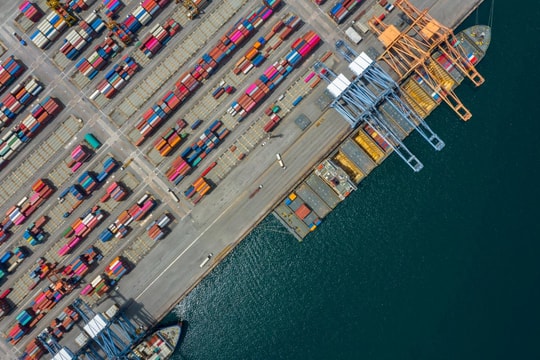As we know, despite difficulties from the global crisis, logistics has been developing in many countries worldwide thanks to its inevitability and thanks to advantages it offers to human society. According to researches, it is believed that sea economy will bounce back in the next few years, together with developments of seaports, container transport and globalized logistics.
As a developing country aiming to industrialization and prosperity from sea economy in 2020, what should we do to impulse international integration and stable development of the logistics?
CHOOSING STRATEGIES AND A MODEL FOR LOGISTICS DEVELOPMENT IN VIETNAM
Present situation of Vietnam Logistics
Logistics appeared in Vietnam nearly two decades ago through the process of science-technology revolution and open-door. Despite its modest contribution of USD 2 billion/ year to the country’s GDP, the logistics has expanded in size: there have been over 1,000 businesses operating in logistics nationwide (the quantity has double that of Malaysia’s or of Thailand’s). To be ranked at the position of 53/155 in the years of 2007, 2009 and 2011 on Logistics Performance Index (LPI) by World Bank, the logistics of Vietnam seems to have no movement forward in the four-year time. This is due to many reasons, and one of them is development without the depth: the lack of finance strength. Businesses operating in logistics in Vietnam are weak in term of finance strength (80% businesses have legal capital from 1.5-2 billion dong), they do not have close connections, their activities are small and scattered. They have been able to carry out some services as requested from foreign liners as uploading/unloading, short-distance transport, warehousing, forwarding, packaging… In short, they have been acting as sub-contractors or they have been hired by foreign partners in the level of Second Party Logistics (2PL); they have not been able to compete with international professional ones or carry out administration management of the whole supply chain of production, transport and distribution in the levels of 3PL, 4PL, and 5PL (Third Party Logistics, Fourth Party Party Logistics, and Fifth Party Logistics).
In Vietnam, logistics was recognized by the Commercial Code revised in 2005 as a commercial activity, and has been taught in academies and national universities. In fact, there have been issues. According to legal experts and Vietnam businesses operating in logistics, regulations in the Code pay too much attention to those carrying out logistics services (including logistics service providers and customers using the services), not pay enough attention to improvements, investment encouraging and thus ruin competitive force of businesses. This has been mentioned in journals, together with solutions for a clear transparent legal corridor. And it is expected to have consideration from associations and functional organizations as well.
Logistics in the world
Logistics started around half of the century ago and it has been in the progress of globalization: from 2PL and door-to-door delivery to 4PL, 5PL and MCS (management the whole supply chain of production and delivery using electronic technology). At the present, One-Stop Shop (one stop and customers can buy all what they need) has been applied in the U.S and some European countries. This proves perfect connections among units in supply and production chain and this is also the answer for the question why logistics has been globalized so quickly.
CRITERIA FOR CHOSING A LOGISTICS MODEL
Logistics is high-tech science with two defining characteristics: technology and economy. And thus, no model has been decided to be a standard one in the trend of globalization. A suitable model will be chosen in accordance to a country’s economical potential, technology level and geographical position. Countries with road transport advantages as the U.S and Canada have strong road logistics development; some make good use of railroads as European countries; some make good use of both road and railroad transport as China and Japan. Airway is used in countries with high technology. Waterway transport is mostly used in countries with convenient waterway network. Logistics and container transport has not much been mentioned in waterway transport in Vietnam in general, and in Red River and Mekong Deltas in particular. It seems that transportation planners have forgotten the technological nature of logistics activities is the intelligent and effective connection of multimodal transport.
IDEAS SHOULD BE CONSIDERED
When talking about logistics issues, Mr. Ho Van Nien, Vice Chairman of The People’s Committee of BR-VT – a whole-hearted person to Vietnam sea economy- said logistics is a main point in making BR-VT a modern seaport city. Although seaport development infrastructure has taken shape, there have not been any organization to operate and establish a supply chain that is able to integrate to the global one. Who will be a connector? The Ministry of Transport? The Guidance Board of the Southern Key Economic Zone? Or an equivalent organization will be founded to operate the Group 5 Sea Port? With our current mechanism, it is hard to develop our logistics.
At the beginning of 2013, in an interview with the magazine Vietnam Logistics Review, Mr. Do Xuan Quang, President of AFFA and President of VLA, talked about issues relating to logistics development in Vietnam.
He appreciated achievements that the Vietnam logistics sector have achieved, mentioned about incoming difficulties, and determined it is necessary to have a national master plan for Vietnam logistics or it would take more time to achieve what we expect…and “better late than never”.
We completely agree with both ideas and we expect they will be considered by functional organizations in the process of making development strategies and in the process of choosing a suitable logistics model for the country.
“It is the first step that costs”. Actually, our logistics is not the first step for it entered our country nearly two decades ago. However, we can also see it as “the first step” for we have had no development strategies or no logistics model that suits the country’s situation so far.
A proposal for establishing a National Logistics Committee has been made by researchers and has appeared on magazines and media. It is time to have consideration on it if we still wish to bring logistics into our social life and to be a developed country.


